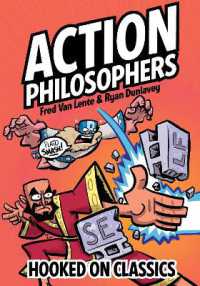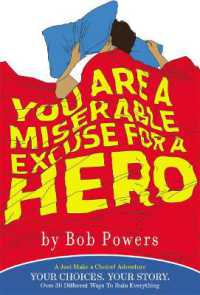Full Description
This one-stop resource for trainee teachers within the Further Education and Skills Sector (FES) incorporates all the core requirements of the new Diploma in Teaching (DiT) for FES. Also, fully linked to the occupational and professional standards developed for the FE teaching landscape.
This book provides both new and existing teachers with information and support for a career in the sector, as it is fully aligned with the latest government requirements. It emphasises what it means to be a teacher, the centrality of the learner, and the need for teaching to be less about the process and more about the personal.
Content delves into a greater focus on subject-based pedagogy and on placements, as well as in-depth coverage of topics related to SEND, digital and online pedagogies, planning teaching and learning and the final assessment/viva.
For readers to engage in critical reflection and apply knowledge to practice, the text is packed with critical thinking tasks at level 5 and extension tasks for those working at levels 6 and 7. Evidence-informed practice and research also underpin each chapter.
Key features:
Covers all level 5 and beyond qualifications for the sector, incorporating the Diploma in teaching and the Level 5 apprenticeship standards
Maps to the sector's occupational standards and professional standards and includes information on placements and the final assessment / viva
Responds to the new emphases on subject pedagogy and the centrality of the learner in the learning process
Built in development with extensions to levels 6 and 7
Fully embraces digital and online pedagogies
Contents
PART 1: INTRODUCTION Glossary Chapter 1 The FES sectorA Brief history and overview of the sector Routes into teaching post-14 (Level 5 and above) Professional standards Occupational standards ATLS/QTLS The inspection process PART 2 LEARNERS AND LEARNING Chapter 2 THE FES learner The Learner and their characteristics The post 14 educational offer (BTEC, A Level, apprenticsehips etc) Embedding of English and mathematics Legal and Regulatory Practices (SEND/PREVENT) Chapter 3 SEND in the FES Sector What is a SEND learner? Range of needs and characteristics of the SEND learner, recognizing SEND in the classroom Inclusive practice for the SEND Learner Chapter 4 The emotional health of the learner Mental health and well-being - definitions Trauma informed pedagogy Behavioural issues such as Oppositional Defiant Disorder (ODD) and Conduct Disorder (CD) Anxiety, Depression Eating disorders Self harm Post-Covid issues Recognising and supporting young people with mental health Signposting Chapter 5 The learning processContemporary learning theory and neuroscience Role and currency of research and evidence Application of theory to practice Encouraging learners to be independent and aim high PART 3 TEACHERS AND TEACHING Chapter 6 The FES Teacher The role and responsibilities of a teacher What makes a good teacher? Working with and learning from other teachers Other sources of support The dual professional Chapter 7 Planning for teaching and learning Rigorous curriculum thinking and Curriculum for inclusive practice Person-centred approach Planning and delivering sessions Developing inclusive resources to meet learner needs. Teacher expectations of learners including classroom management F2F and remote delivery Assessment and feedback The Reflective Teacher Effective Communication Chapter 8 Inclusive teachingEquality, Inclusion and Diversity in teaching Decolonising the curriculum CHAPTER 9 Effective digital and on-line pedagogies Range of Ed Tech AI, AR, VR etc Managing digital delivery On-Line pedagogies Digital technologies legal and regulatory responsibility PART 4 PROFESSIONAL PRACTICE FOR THE TEACHER Chapter 10 Teaching practice requirements Preparation for placement







